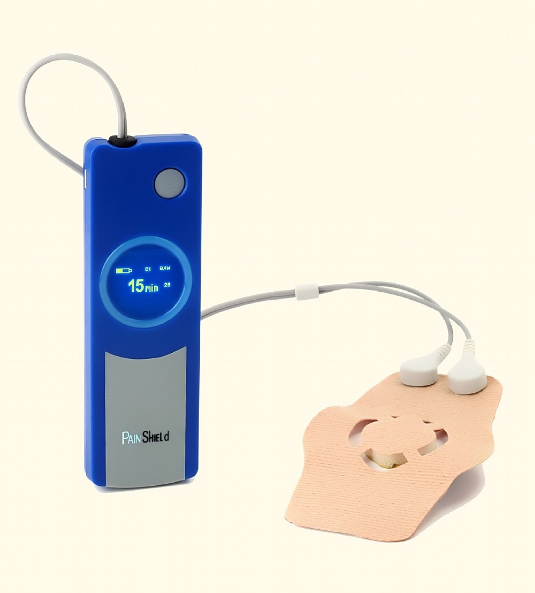Ultrasound technology has been used for decades in medical imaging of soft-tissue structures and bony surfaces, but its potential for use in managing pain — particularly chronic pain — is being less than fully exploited, according to some pain experts.
A report by C.J. Arlotta of Monthly Prescribing Reference (MPR), notes that Michael Bottros, MD, director of the Acute Pain Service and assistant professor in the Division of Pain Medicine of the Department of Anesthesiology at Washington University School of Medicine, provided his PAINWeek audience with a capsule history tutorial on ultrasound technology: its beginnings, and how it actually works, also noting that application of ultrasound in chronic pain management remains at a relatively experimental stage of development, with there having been few clinical studies involving ultrasound use in chronic pain and with few experts having acquired the necessary skills and expertise.
Dr. Bottros noted that ultrasound research dates from the late 1930s work psychiatrist and neurologist Karl Theodore Dussik, and noted that using ultrasound has several benefits such as no radiation exposure and it may require less associated medication than other methods.
PAINWeek is the nation’s largest pain conference for frontline clinicians with an interest in pain management, held in 2015 at the Cosmopolitan of Las Vegas September 6 to 10, with an estimated 2,300+ physicians, physician assistants, nurse practitioners, nurses, pharmacists, hospitalists, dentists, psychologists, and social workers in attendance this year.
 MPR’s Arlotta also cites David Rosenblum, MD, a member of its Clinical Pain Advisor’s editorial board and Director of Pain Medicine at Maimonides Medical Center in New York, who is known for his unique approach to pain management and ultrasound techniques, discussing several advantages associated with using ultrasound technology to manage and treat pain. Dr. Rosenblum has achieved national recognition through his efforts to educate his colleagues and promote safe and effective pain management, and is experienced in the performance and integration of ultrasound guided regional anesthesia into anesthesiology and pain management practices. Actively involved in multi-center clinical trials, and resident education, he is nationally known for his work on http://PainExam.com, http://AnesthesiaExam.com and http://PMRExam.com.
MPR’s Arlotta also cites David Rosenblum, MD, a member of its Clinical Pain Advisor’s editorial board and Director of Pain Medicine at Maimonides Medical Center in New York, who is known for his unique approach to pain management and ultrasound techniques, discussing several advantages associated with using ultrasound technology to manage and treat pain. Dr. Rosenblum has achieved national recognition through his efforts to educate his colleagues and promote safe and effective pain management, and is experienced in the performance and integration of ultrasound guided regional anesthesia into anesthesiology and pain management practices. Actively involved in multi-center clinical trials, and resident education, he is nationally known for his work on http://PainExam.com, http://AnesthesiaExam.com and http://PMRExam.com.
A 2003 study published in the journal Pain entitled “The effect of combined therapy (ultrasound and interferential current) on pain and sleep in fibromyalgia” (Pain. 2003 Aug;104(3):665-72) coauthored by T.F. Almeida , S. Roizenblatt , A..A. Benedito-Silva, and S. Tufik focused on assessing the effects of combined therapy with pulsed ultrasound and interferential current (CTPI) on pain and sleep in fibromyalgia. Seventeen patients fulfilling FM criteria were divided into two groups, CTPI and SHAM, and submitted to pain and sleep evaluations. After 12 sessions of CTPI or SHAM procedure, patients were evaluated by the same initial protocol. After treatment, CTPI group showed, before and after sleep, subjective improvement of pain in terms of number (BM) and intensity (VAS) of painful areas, as well as objective improvement. Subjective sleep improvements observed after CTPI treatment included decrease in morning fatigue and in non-refreshing sleep complaint. This study shows that CTPI can be an effective therapeutic approach for pain and sleep manifestations in fibromyalgia patients.
Chronic pain sufferers who don’t want to wait for more clinical trial vetting can experiment with ultrasound thereapy now. A MedFaxx article notes that therapeutic ultrasound used for treating fibromyalgia provides deep tissue stimulation and pain relief, and that ultrasound works extremely well as a pain therapy system to manage fibromyalgia pain flare-ups and can now be utilized in enhanced comfort of the home without having to go to a clinic or doctor’s office for infrequent treatments.
In July, Long Island, NY based NanoVibronix, medical device firm focused on creating medical products utilizing its proprietary low intensity acoustic technology, announced the launch of PainShield MD a novel, therapeutic ultrasound product marqueed as the first hands-free, patch-based ultrasound device for the treatment of pain and soft tissue healing. PainShield MD is claimed to provide targeted therapy for pain and soft tissue injury, and accelerate wound healing.
The PainShield device is a wearable, battery powered electronic unit that uses a disposable patch through which NanoVibronix says it delivers localized energy creating therapeutic effect to relief localized pain and induce soft tissue healing — made possible due to proprietary technology that allows for the creation of a therapeutic transducer that can be made disposable and incorporated into a patch.
The company notes that ultrasound energy has been used for many years to relieve pain, muscle spasm and to enhance wound healing, but while conventional ultrasound affects a narrow portion of tissue, the PainShield MD action is much wider, and the company’s patented technology allows for creation of miniature transducers that transmit low-frequency, low-intensity ultrasound through flexible materials surfaces. This development may be utilized for a variety of medical applications requiring low cost therapeutic ultrasound qualities.
RELATED: Study Shows Melatonin Associated With Fibromyalgia Pain Improvement
Conventional ultrasound units are also limited by their cost and size, and even portable units are cumbersome to transport. Visits to a chiropractor or physical therapist office for ultrasound physical therapy can be expensive and inconvenient, and the small number and length of treatment sessions that are possible with conventional units in a clinical setting limit the effectiveness of the therapy.
They point out that their PainShield MD device solves these problems associated with conventional therapeutic ultrasound, with its small 3cm ultrasound transducer contained in a self-adhering patch, its light weight (3oz – 85g) making it wearable and portable, and a pocket-sized driver smaller than a TV remote (39x12x125 mm – 1.5″x7/16″x4 7/8″ – approximately). Consequently, the PainShield MD system can be used almost anywhere and anytime at home, in a clinical setting, at work or even while sleeping, and treatment is not limited to the few occasions that a patient can visit a therapist’s office. Allowing for time to charge the unit, up to two treatment sessions of 6.5 hours each can be applied each day. PainShield MD is also hands-free and simple to operate — one button switches the unit on and off and does not require medical personnel to apply it and hold it in place while the patient receives therapy.
According to NanoVibronix, ultrasound energy penetrates up to 4 cm below the surface and the therapeutic action reaches up to 10 cm from the device, which the company claims has been shown to alleviate the pain of trigeminal neuralgia and other pain conditions including Heel Spur, CTS (Carpal Tunnel Syndrome), Tendon injury treatment, (Achilles Tendonitis, tendonitis elbow, tendonitis knee, tendonitis wrist, tendonitis shoulder), various Musco-Skeletal injuries and disorders, postoperative pain, chronic pelvic pain, interstitial cystitis, and related conditions.
Results of a study of PainShield used for treating chronic pelvic, urological and GI pain in women can be found at:
http://bit.ly/1WkUEvq
Each PainShield kit includes four therapeutic patches, and sells for $795.00
Sources:
NanoVibronix
PAINWeek
MPR
MedFaxx
Pain (journal)
US National Library of Medicine National Institutes of Health(PubMed)
Washington University School of Medicine
algo-sonic.com

